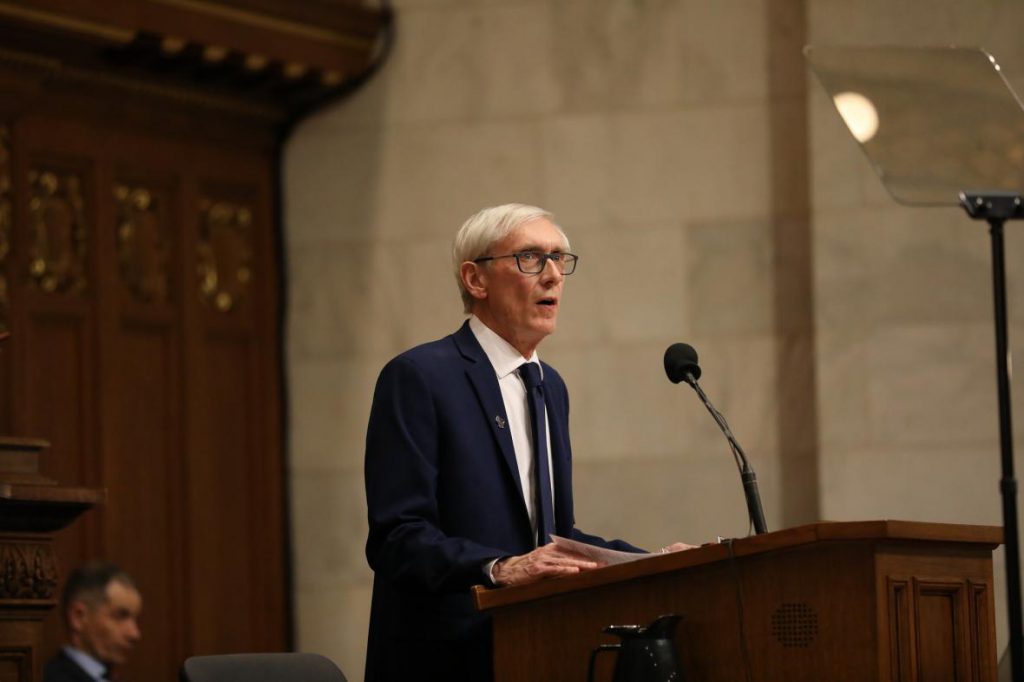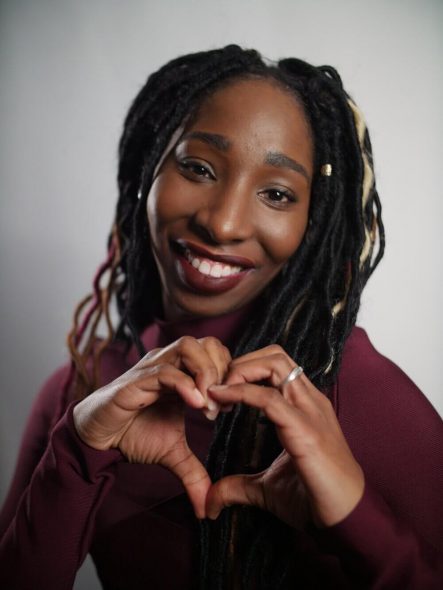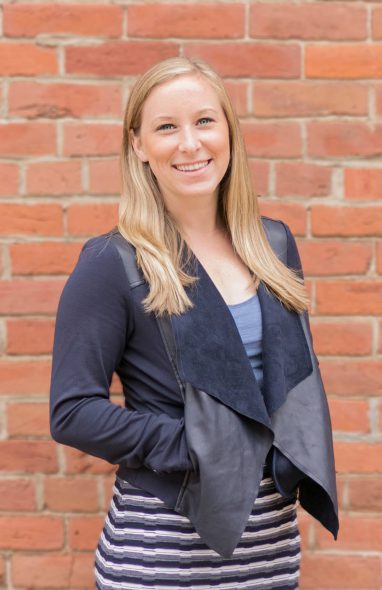Budget Item Funds Community Health Workers
Evers budget has $14 million for workers serving low-income urban and rural areas.
Although there’s a long way to go before Gov. Tony Evers and legislators agree to a budget that becomes reality, public health advocates are applauding the Evers administration for its bold proposals to improve the health of Wisconsinites.
People working in communities that have difficulty accessing quality health care and essential services are rooting for a $14 million item in the Wisconsin Department of Health Services (DHS) budget that would provide Medicaid reimbursement for the work of community health workers (CHWs). This relatively inexpensive investment has the potential to close some of the state’s deep disparities in the state’s health care system, which, according to most indicators, does a poor job of serving low-income Wisconsinites, in both urban and rural settings.
Community health workers are not medical professionals, but they serve as a bridge to services, including health care, prenatal care, food assistance and housing. They are delivering “culturally congruent care,” meaning they often live and work in the communities they serve. Often these are Black and brown communities in cities, or rural areas that include both low-income individuals of all races, including migrant workers. And in the middle of a global pandemic with a disproportionate impact on people of color, they often are a trusted source of information for people who are suspicious of medical systems because of historic racism and other factors that make health care less accessible.
“The Governor recommends expanding Medicaid benefits to include services provided by community health workers,” reads the item on page 272 of the voluminous DHS budget. “Community health workers serve as a liaison between health and social services and the community to facilitate access to services and improve the quality and cultural competence of service delivery.”
Dr. Steve Tyska, chief medical officer for the state’s Division of Medicaid Services, is thrilled that the administration sees the benefit of funding the work of these professionals. “Community health workers can have a tremendous impact by connecting with people who are sometimes hard to reach,” Tyska tells Wisconsin Examiner. “People are naturally more willing to accept help from their neighbors than from someone from outside their community. Investing in programs like these strengthens communities and pays off in improved health outcomes. That saves the state money in the long run.”
Serving Milwaukee
The heart of the project in the eastern part of the state is in the Milwaukee office of Unite WI, where executive director Bria Grant is busy coordinating the training of CHWs. Grant emphasizes that this model of health care treats systemic ills, not just medical issues.
“Five to 20% of health is either genetic or within the four walls of the clinic and is addressed with medicine or some sort of intervention in that way,” says Grant. “The other 80% is out where you work and play — in my school and my home and my church setting or faith-based community. My work is being able to make sure that people have whole wellness, not just in the physical, but in those other areas.”
Community health workers serve as “lay leaders,” says Grant. “They are from the community, know the community, understand the community and work toward improving the goals and outcomes for making the community safer.”
When it comes down to it, says Grant, this model actually revitalizes ancient support structures. Internationally, the World Health Organization has used community health workers to “bring improved health outcomes to some of the most impoverished places in our world,” she says.
Closer to home, North American Indigenous communities employ a similarly broad view of health and wellness. “Our Native brothers and sisters call them community health representatives,” says Grant. “This is part of the village concept that we each take care of the other. And we make sure that we pass that information on: how to take care of yourself, your family, and how to access the resources, how to hunt and gather all of those things.”
Community health workers also take into consideration families’ needs, not just individuals, Grant explains. By way of example, she describes a family that lives in a small one-bedroom apartment. The mother is pregnant, and the grandmother is a smoker with Type 2 diabetes. A son has asthma and is struggling in school. A Community Health Worker, says Grant, would assist with all of these factors.
“Our system is kind of disjointed. You have an HMO that may be interested in Mom, and a system may be interested in Grandma, but no one is interested in a family as a whole,” she says. “This mom is pregnant. Let me make sure that I can focus on walking her through a healthy pregnancy and successful delivery. Let me make sure I can identify housing for this mom. And we want to create some level of independence, if that’s what Mom is looking for, help with employment. Let me help with transportation.”
Providing these links and bridges for families is key to overcoming barriers to wellness, says Grant. And it’s an approach that works well, and replicates itself as former clients sometimes become CHWs.
“Community health workers have the opportunity to speak to the varying systems and stakeholders that desire to know what’s happening with this family in a streamlined way,” Grant adds. “They are a point of contact that represents the whole family and then communicates as best as possible to those entities so that it minimizes the frustration of the family with getting services.”
Community health workers as doulas
Lakeeta Watts knows firsthand the benefits of doulas, who provide non-medical support for mothers during pregnancy, birth and beyond. Watts is both a CHW and a doula connected with Unite WI. She has five children; her youngest is just four months months old.
“Even going through five births, each time you’re vulnerable, you’re uncomfortable, you’re going through the pain and all of that, but also it’s almost like you’re routine to the health system. You go in and because you have X amount of kids, people think, ‘Oh, she’s used to this. So we’ll just come in and do what we always do.’”
She says if patients don’t advocate for themselves, or have a doula there to help them, medical professionals don’t always explain the interventions they are ordering. “They’re doing their jobs, but they don’t really take in the fact that you are human and you are curious to know what’s happening. You’re pregnant and you’re getting ready to have a baby, and you’re putting your care in their hands.”
She says having a doula at her last two births made a big difference. “I noticed that for me, my birth was a little bit more traumatic with the ones without a doula, as opposed to the ones where I did have a doula because there were a lot of things that had to happen to me. I was a little bit fearful because I didn’t understand what it was. Having a doula kind of reminded me: Hey, this is my life, I can speak up and say ‘this is what I want or need, as opposed to being afraid to not say something in the first place because they’re not going to listen.”
Both Grant and Watts note that Black communities have unpleasant and traumatic histories with the medical system, going back to infamous events like the Tuskegee syphilis experiment, which denied medical treatment to 400 Black men infected with venereal disease from the 1930s to the 1970s.
Wisconsin has dismal rates of maternal and infant mortality, and some of the worst racial disparities in the nation. According to DHS statistics from 2018, the last year posted, the Black infant mortality rate was 12.8 deaths per 1,000 versus. 4.8 among whites. Research shows that the presence of doulas improves outcomes, such reducing the number of premature births, shortening labors and increasing breastfeeding rates. The Watts says doulas are not often paid well, and Medicaid reimbursement would increase accessibility and make services available to more women. “People see the value of having the doula, because it does lower those health disparities,” says Watts.
Doulas are an important step in empowering and improving outcomes for women who have felt left out of managing their own birth plans, says Watts. And her services are even more essential during the pandemic. She says she has seen an increase of mothers wanting to give birth at home rather than in the hospital due to the risks of hospitalization during the pandemic.
Connecting rural workers
Walter Orzechowki, executive director of the Southwestern Wisconsin Community Action Program, is hiring one CHW and has secured funding to hire a second. His nonprofit coordinates housing, transportation, transportation and other services for low-income people, including migrant workers and rural whites.
“We have a growing Spanish-speaking population of farm workers and their families, largely related to the growth of the large dairy farms in southwestern Wisconsin,” says Orzechowki. “I’ve been involved for many years with the social determinants of health, which means to have a healthy community — in our case, it’s a five-county community — you really need to address many, many things, not just the provision of medical care, but also the the issues that lead to people living healthier, healthier lives.” Other issues his program often helps with include safe and affordable housing, food security, transportation, as well as “helping people find or be trained for jobs that pay a living wage and have health benefits.”
Providing culturally competent care is key, Orzechowki says. His organization has worked with a clinic that drives a bus to dairy farms in the area to provide free health care to migrant workers and their families, many of whom come from Mexico and Honduras.
“Those community health workers have to not only be linguistically sensitive to who they’re working with, but they also have to be culturally sensitive,” says Orzechowki. “And in our case, we also have a rural culture; people will say we’re different than city people.”
Lindsey Purl, director of Great Rivers Hub in La Crosse, says her organization relies on CHWs to build bridges between different systems. “The issue with health care is that social determinants and clinical health care are often siloed in our communities,” Purl explains. “And so if you have people from either of those sectors, they’re meant to be experts in those sectors and do amazing work in those fields, but what you need to navigate for somebody who’s high risk and somebody who might be disenfranchised from either of those systems is someone who can understand the full picture of how how your diabetes is impacted by your homeless or your housing status. Transportation impacts all of these things. And so does your access to food.”
COVID and vaccine hesitancy
Community health workers are key to Great Rivers Hub’s strategy for dealing with the impact of the COVID-19 pandemic on communities of color and low-income folks.
“We have communities that have historical trauma from health care systems that prevent them from really utilizing them,” Purl says. “You need someone from that community, someone established that you trust to share information on how to protect yourself and what to be concerned about.”
She says many people experience confusion and hesitancy around COVID protocols, and CHWs have helped people navigate shifting messages on masking, handwashing and now vaccines. “We just put together some vaccine education and we’ve started to talk about vaccine hesitancy,” says Purl.
Great Rivers Hub received a DHS grant recently for its work to prevent flu transmission, including promoting flu vaccines in populations that generally have low vaccination rates.
“We’ve been focusing on our Hispanic community and people of color and lower-income families that seem to have lower vaccine rates in our areas,” says Purl. “And so we’ve been building that relationship about education, about vaccines, through flu season.”
When people trust a CHW who coaches them through getting a flu shot, it can open the door to accepting a COVID vaccine, she says.
Grant, from Unite WI, says overcoming vaccine hesitancy in Black and brown communities means understanding the historical basis for suspicion. “I definitely believe that community health workers are the key,” says Grant. “One is there’s a translation needed, an interpretation of the messaging coming from our systems and government down to the people,” she continues. “And sometimes that’s the major disconnect — that I’m not resonating with your social distancing, or my culture doesn’t support social distancing, or my circumstance doesn’t allow for social distancing.”
She adds that CHWs can help convey the importance of certain protocols, while also keeping in mind the big picture of wellness. “How you demonstrate that is important. Like when folks have gone into social isolation, which is a very slippery slope,” says Grant. “Isolation can contribute to further hypertension, cardiovascular disease, depression. And so we want to be mindful that our community health workers are able to translate the messaging that’s coming from our our health systems, and the CDC in a way that their families can really internalize and respect and honor the suggestions that are being provided. Without that level of interpretation, it’s just a brick wall,” she add, saying that money can be wasted on education and services unless people know how to utilize them.
A cost-effective solution
When it comes to addressing the overlapping issues facing communities of color in Wisconsin, an investment in community health workers appears to be a wise choice, with some bipartisan support. Grant says the program had support from the late Rep. Bob Gannon (R-Brookfield), who championed the idea for its cost effectiveness.
“When we talk about some of these causal things in our society, when we think about violence and mental health, substance abuse — all of these things are typically because most people in urban settings are living hand to mouth,” says Grant. “They are barely making it. It contributes to diabetes. It contributes to hypertension. If I’m stressing about my rent every month, my blood pressure is always going to be elevated. It’s going to lead to potential stroke.”
Orzechowki says healthy communities are key to Wisconsin bouncing back from the pandemic. “Having a workforce that’s that’s willing and able to add to our economy, to grow our economy, and to grow it in a way that’s environmentally healthy — I think that’s important too.”
Even prior to the pandemic, Orzechowki says, employers had a hard time finding employees. “They want healthy, active, interested employees. So we do need a healthy population for a variety of reasons, in addition to just the fact that if we have the resources, it is the ethical and right thing to do.”
Tyska, from the state’s Division of Medicaid Services, says he thinks Community Health Workers are one of the most promising aspects of the governor’s newly released budget.
“There is growing awareness in the medical community that medical resources alone cannot bring about good health and wellness,” says Tyska. “We need community health workers to help us connect to those who need help the most, to help those people navigate the complex medical system, and to deliver much needed services that remove barriers to better, healthier, more productive lives.”
Reprinted with permission of Wisconsin Examiner.

























